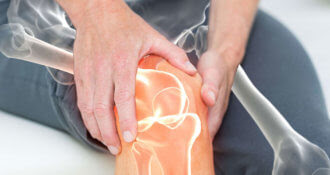Self-Referral to Physical Therapy May Save Money And Help You Heal Faster
At times seeking the sort of treatment you need is troublesome, especially for back torment. Most ordinary medicines like torment drugs neglect to tackle the issue. The normal specialist, while exceptionally fit in numerous spaces, isn't exceptional to analyze reasons for back torment. Spinal anomalies appear on imaging tests, yet most back torment cases are brought about by strong and biomechanical issues which are less noticeable.
Frequently, appropriately diagnosing the wellspring of your requires a prepared eye that can distinguish brokenness by seeing how you hold yourself and how you move. An actual advisor can help you pinpoint what is causing your aggravation, regardless of whether it is helpless stance, ill-advised body mechanics, muscle unevenness or muscle shortcoming. Every one of these issues can upset spinal and pelvic strength just as cause solid torment, bunches and fits.
Except if your back aggravation gives certain "warning" indications, for example, leg agony, shortcoming and additionally deadness or loss of bladder and gut control, standard convention is to hang tight it out for a month or something like that. Nearly everybody has back torment eventually, and it is generally expected fleeting. For some, however, the aggravation repeats. For some's purposes, it becomes ongoing. On the off chance that you have back torment not credited to a conspicuous reason, like a fall, an abnormal development or overexertion, then, at that point, you might have a strong brokenness that could prompt further agony not too far off.
Doctors might be reluctant to allude you to exercise based recuperation for an instance of back torment. Luckily, in many states, you can look for active recuperation without a reference; this is called direct access. Numerous insurance agencies will give repayments to patients who swear off the doctor's office and head directly to an actual specialist. Contact your insurance agency to discover their arrangement on direct access.
Some contend that immediate access urges patients to misdiagnose themselves and abuse care. Be that as it may, an enormous scope study closes in any case. The review, led by Jane Pendergast, PhD, and head of the Center for Public Health Studies at the University of Iowa et. al., took a gander at just about 63,000 clinical records of patients being treating with active recuperation. About 25% of patients in the review were self-alluded. In spite of the above contentions against direct access, the investigation discovered that self-alluded patients had less exercise based recuperation visits and lower by and large medical services costs identified with the wellbeing worry for which non-intrusive treatment was looked for. Direct access patients weren't abusing medical services or ignoring significant wellbeing concerns; they were just removing the center man. With more examinations arising on the side of direct access and the advancement that has been made toward this end over the previous decade, there is motivation to accept that seeking the sort of treatment you need will become simpler soon. Many obstacles are still set up concerning elective medication, yet exercise based recuperation is a characteristic treatment that has edged its direction into standard, regular medication. Opening admittance to it will permit more patients to sidestep the course of costly imaging tests and prescriptions.


Comments
Post a Comment